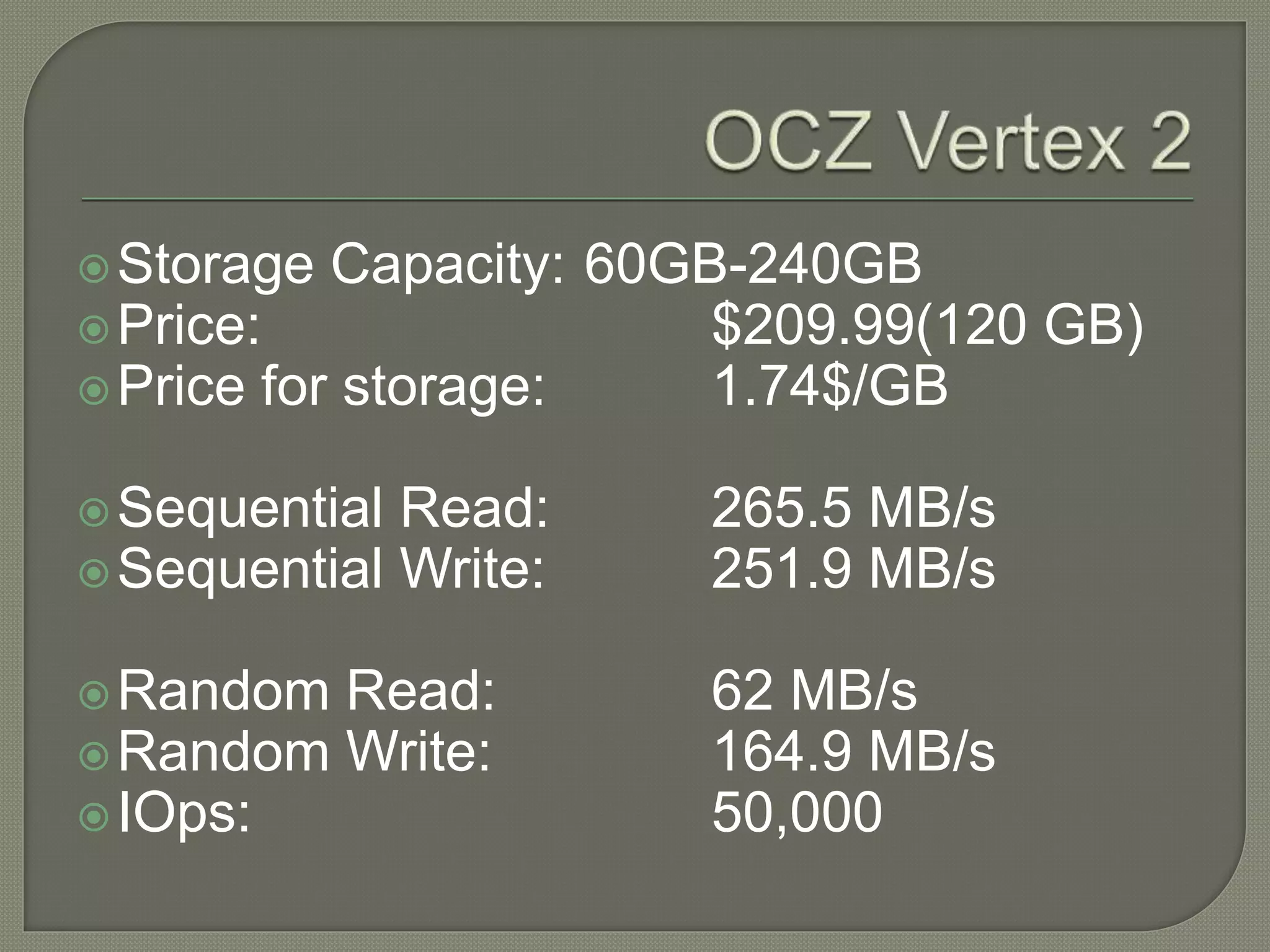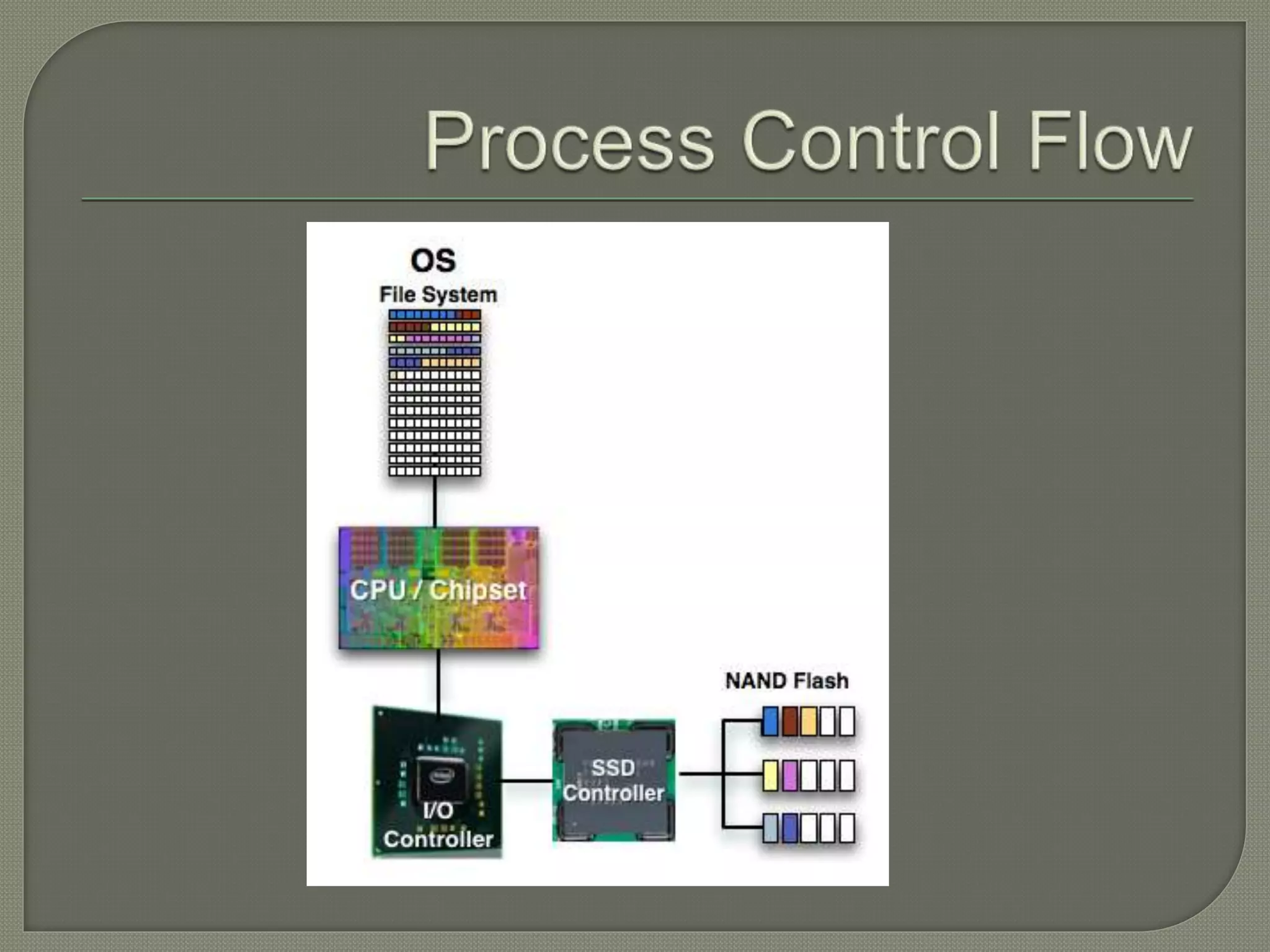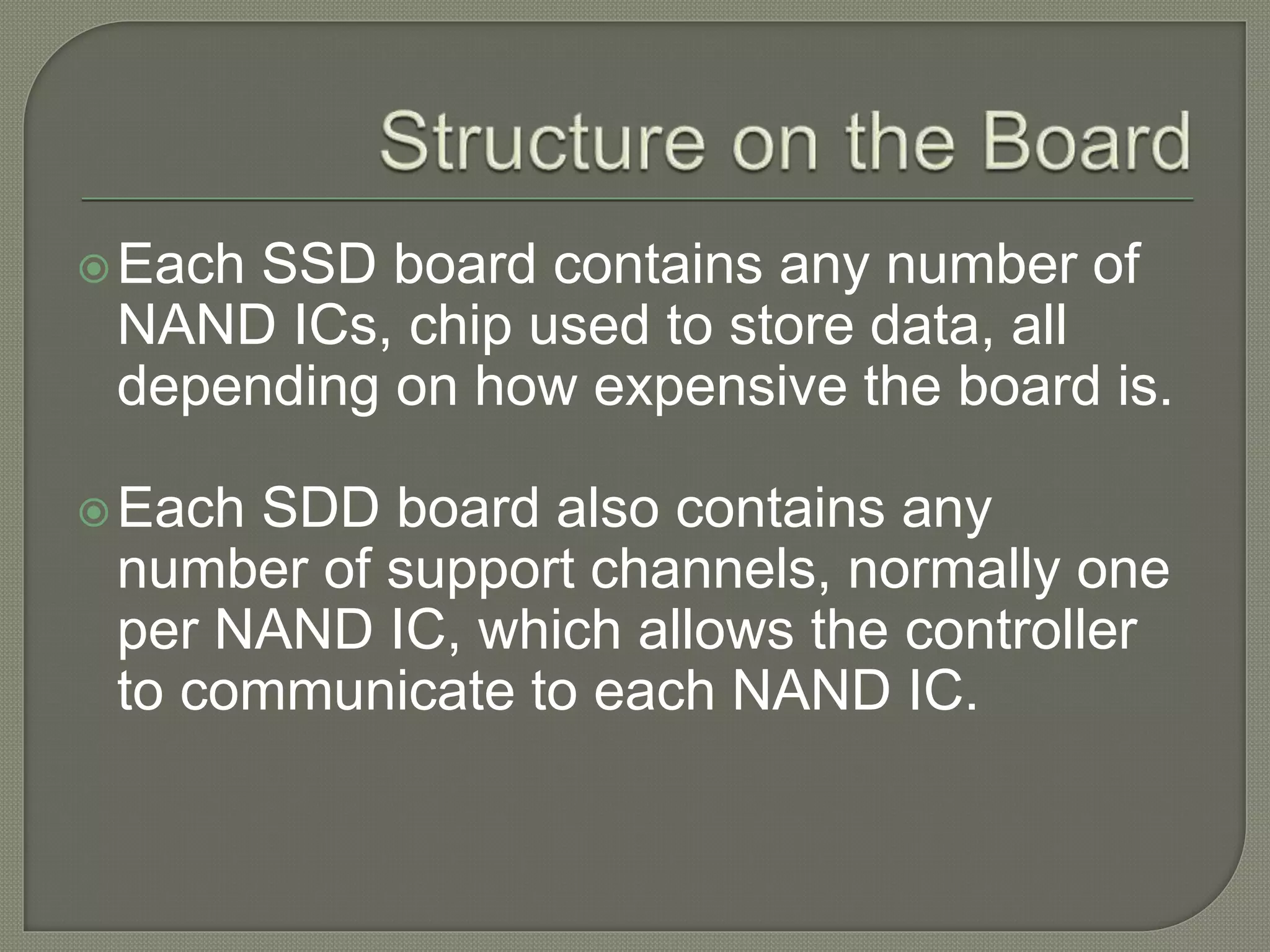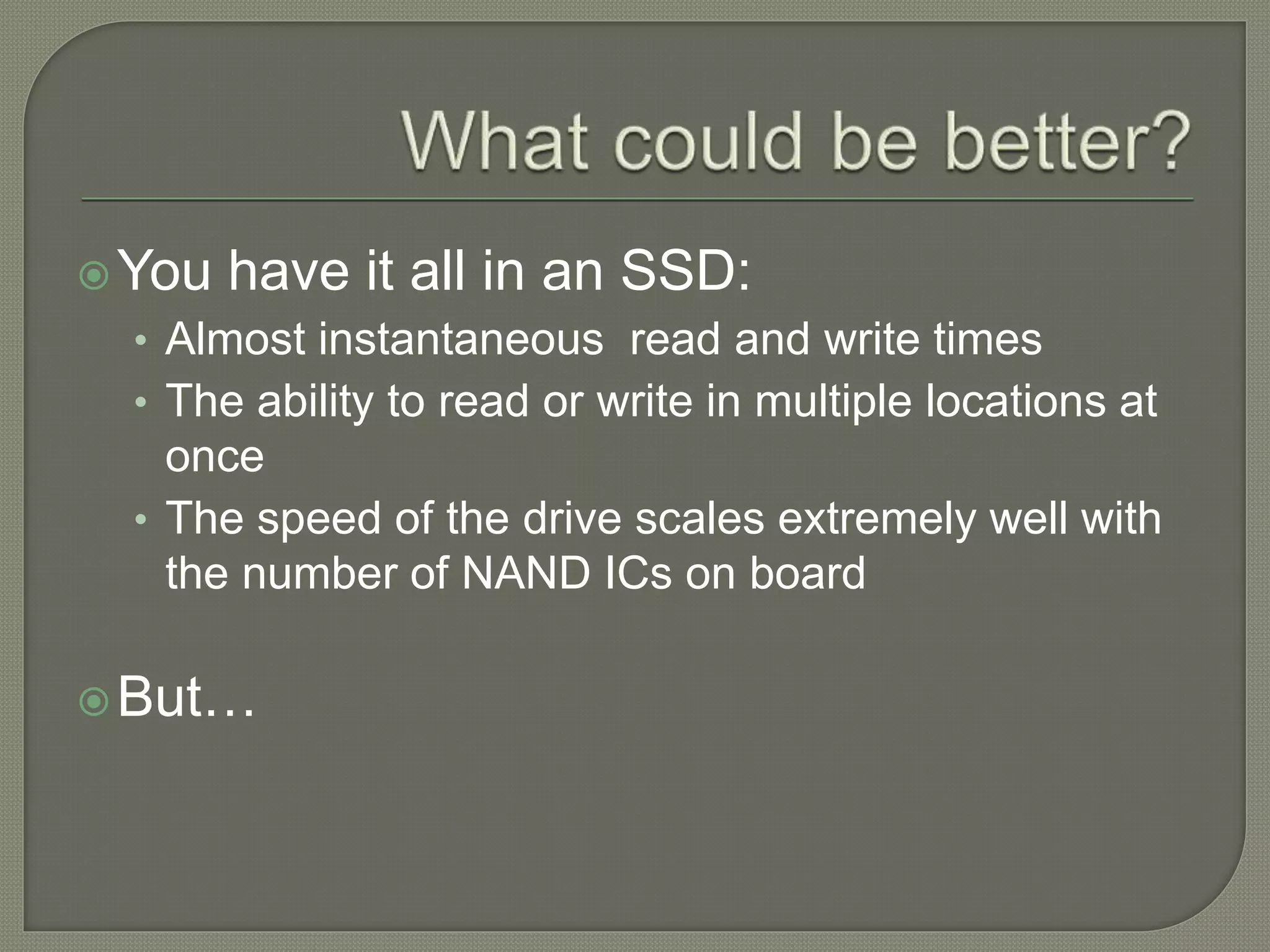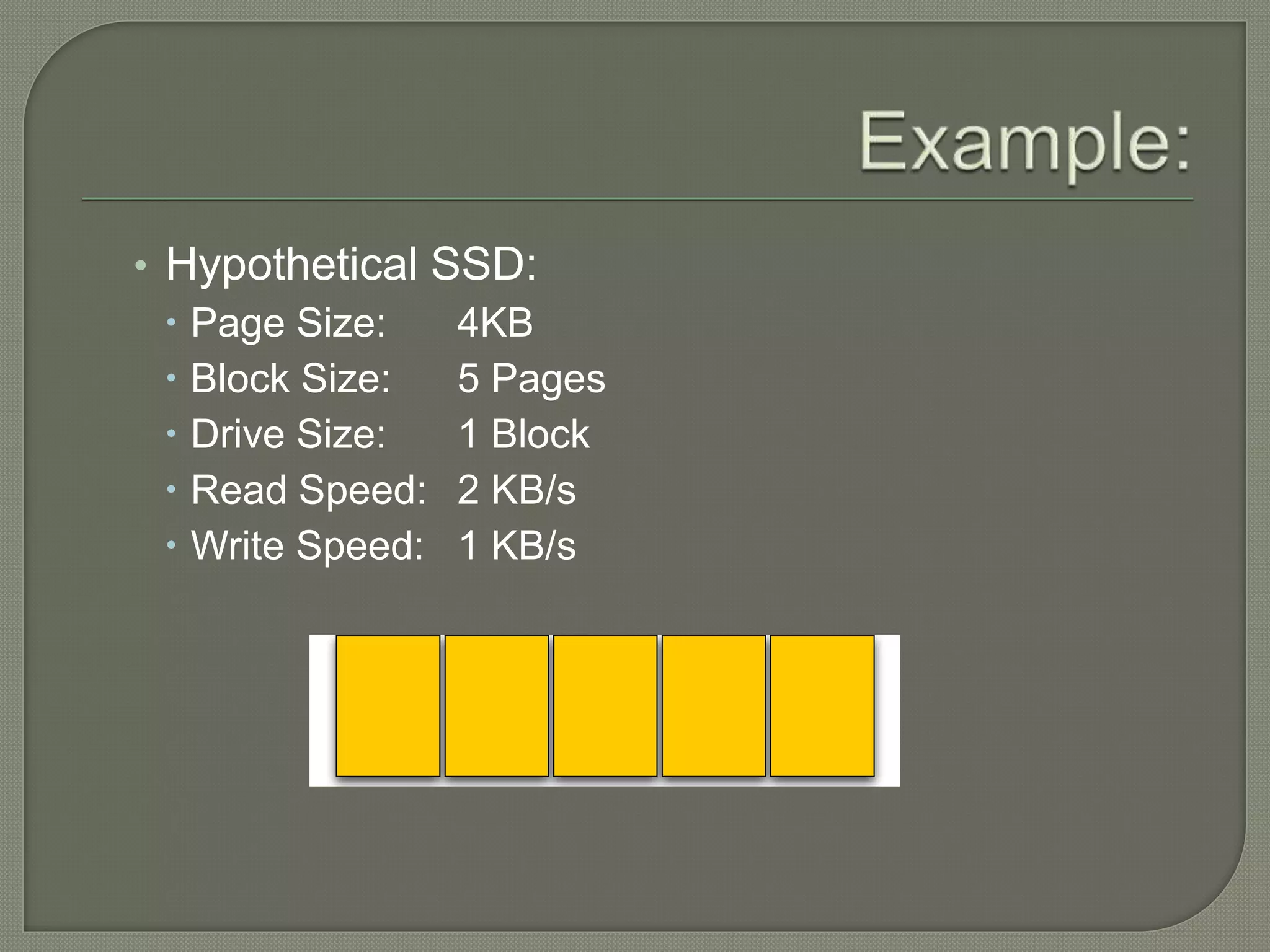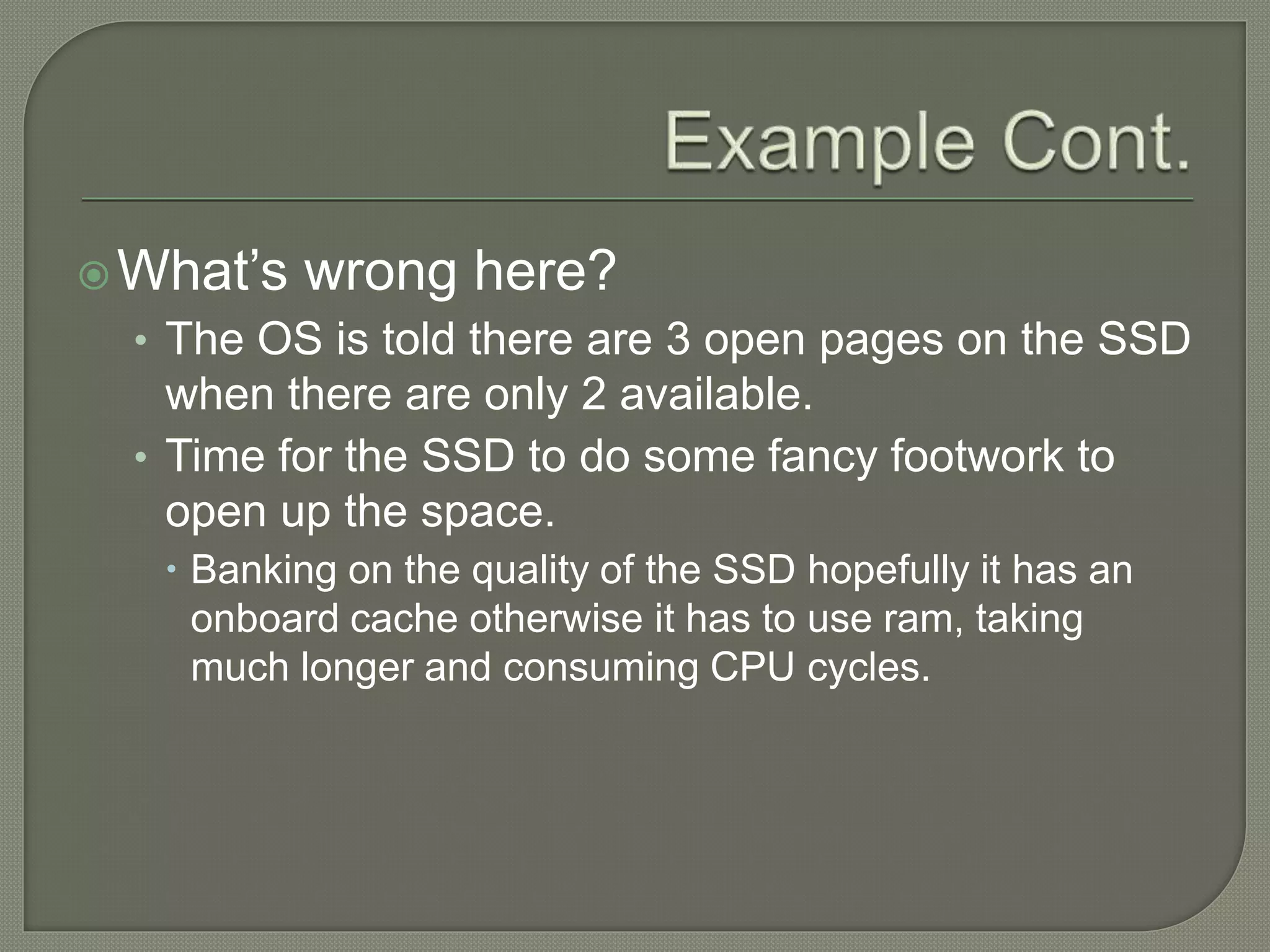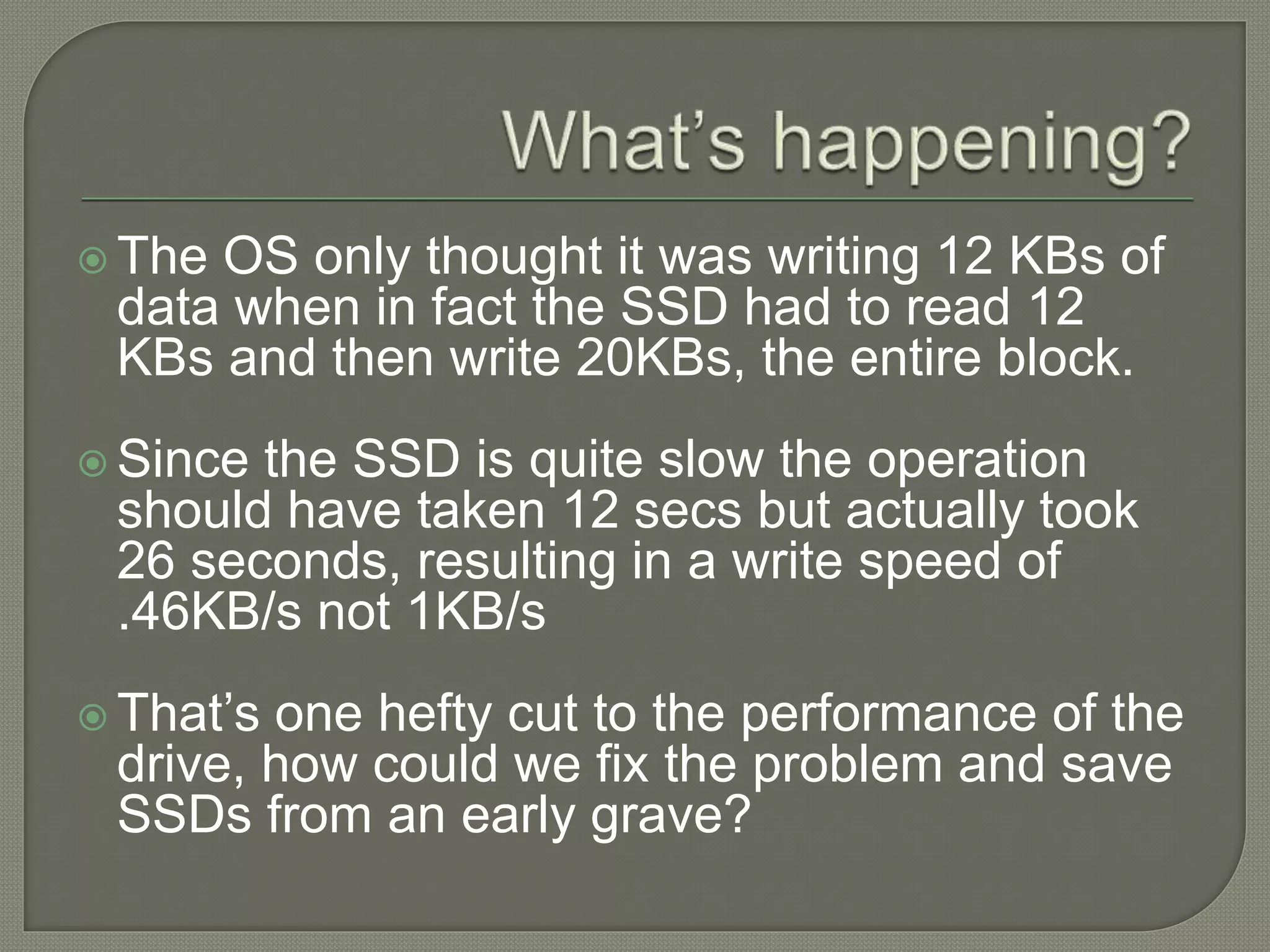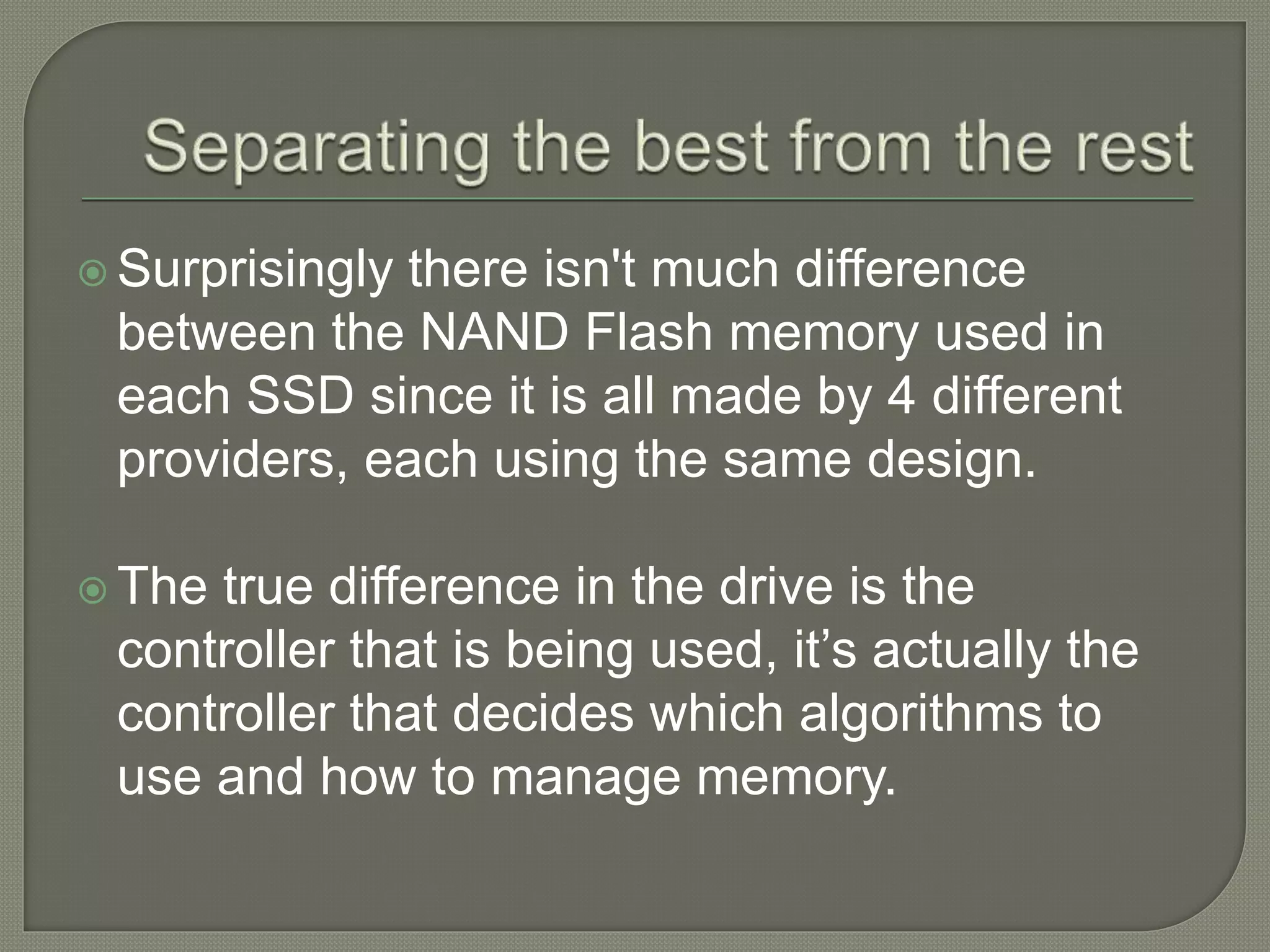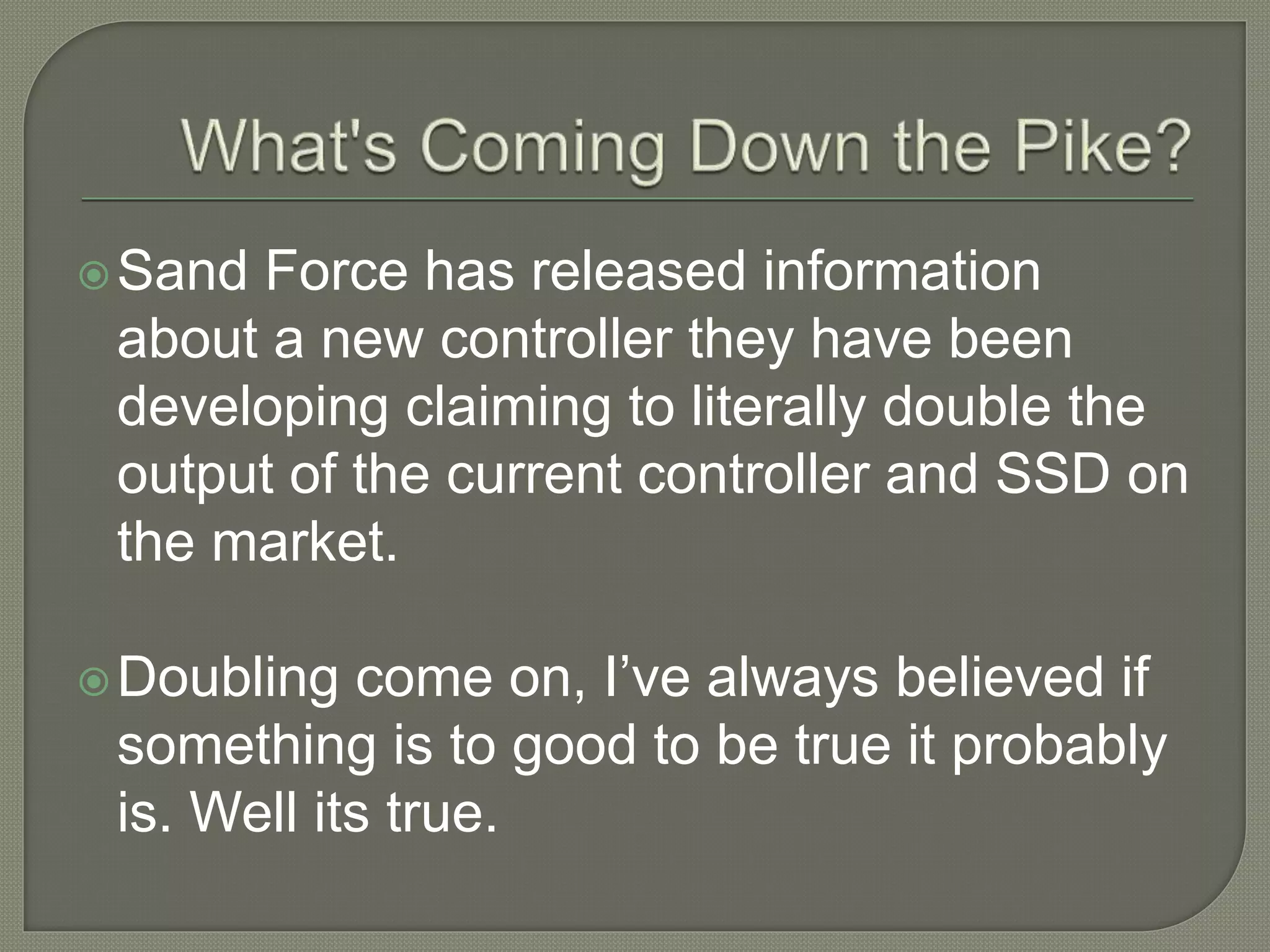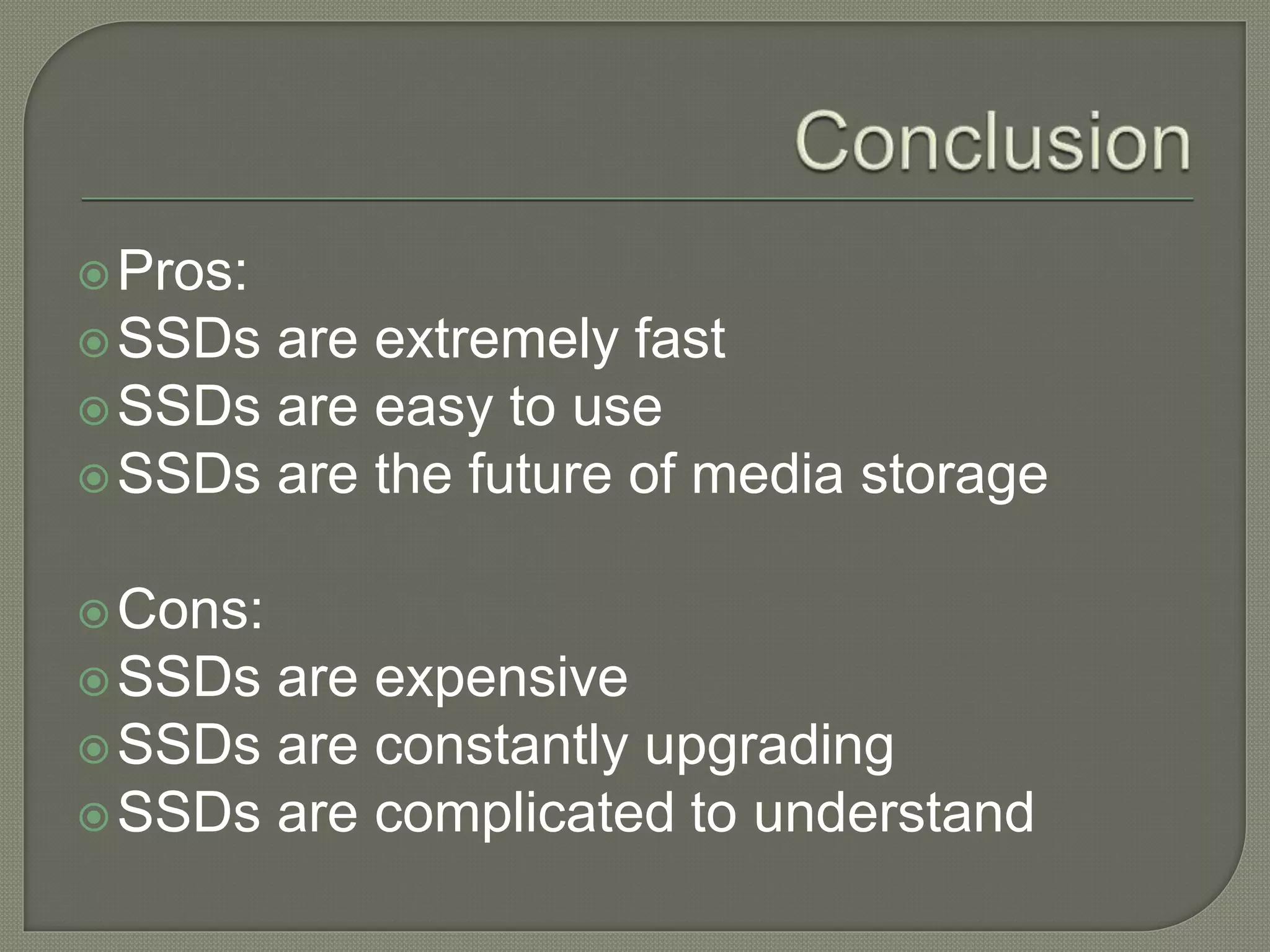This document compares the specifications and performance of various hard drives and solid state drives. It finds that while SSDs provide much faster seek times, higher RPMs, and greater IOPS than HDDs, they also have higher prices per gigabyte and more complex memory management due to the limitations of flash memory. The optimal SSD performance depends most on the controller technology used rather than the flash memory itself.





